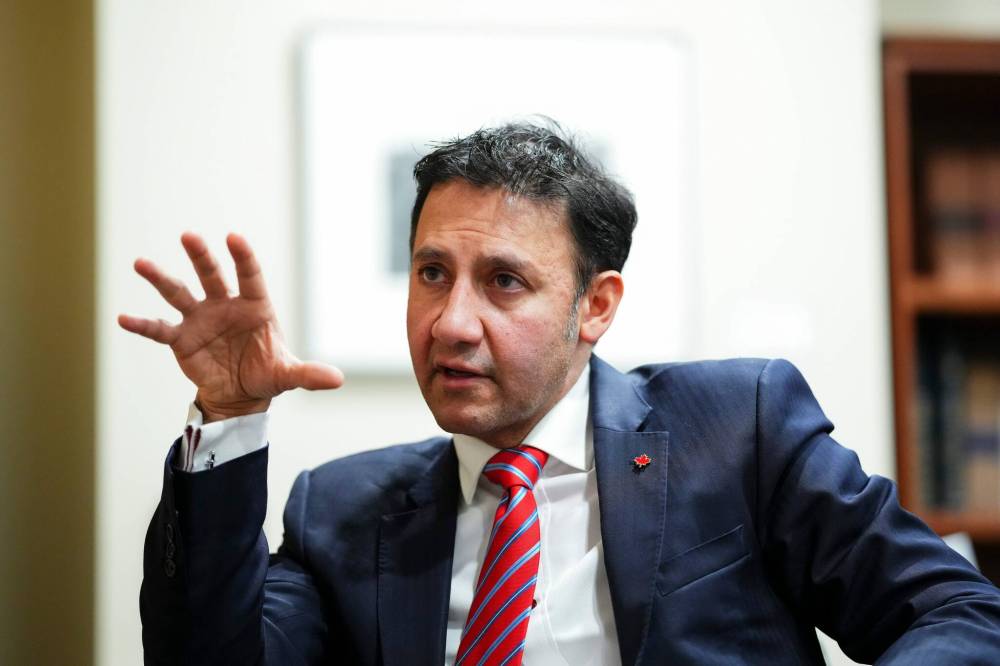Battle for online safety not an easy one
Advertisement
Read this article for free:
or
Already have an account? Log in here »
To continue reading, please subscribe:
Monthly Digital Subscription
$0 for the first 4 weeks*
- Enjoy unlimited reading on winnipegfreepress.com
- Read the E-Edition, our digital replica newspaper
- Access News Break, our award-winning app
- Play interactive puzzles
*No charge for 4 weeks then price increases to the regular rate of $19.00 plus GST every four weeks. Offer available to new and qualified returning subscribers only. Cancel any time.
Monthly Digital Subscription
$4.75/week*
- Enjoy unlimited reading on winnipegfreepress.com
- Read the E-Edition, our digital replica newspaper
- Access News Break, our award-winning app
- Play interactive puzzles
*Billed as $19 plus GST every four weeks. Cancel any time.
To continue reading, please subscribe:
Add Free Press access to your Brandon Sun subscription for only an additional
$1 for the first 4 weeks*
*Your next subscription payment will increase by $1.00 and you will be charged $16.99 plus GST for four weeks. After four weeks, your payment will increase to $23.99 plus GST every four weeks.
Read unlimited articles for free today:
or
Already have an account? Log in here »
Hey there, time traveller!
This article was published 02/03/2024 (639 days ago), so information in it may no longer be current.
Since the days of Web 1.0, the internet has been the wild west, defined by easy access to just about anything and with very little in place to oversee it. That might be about to change in a big way.
The federal government’s Online Harms Act, tabled this week and led by Justice Minister and Attorney General of Canada Arif Virani, lays out a host of crucial steps toward making the online sphere a less dangerous place, particularly for young people and others who may be vulnerable to exploitation. The strategy takes aim at the non-consensual sharing of explicit images, as well as those generated by artificial intelligence. It takes a stronger stance against content meant to incite hatred or violence toward others, and places a greater onus on online platforms themselves to keep a lid on the worst elements among their users.
More than that, it makes the effort to work on all this more concrete by way of establishing a regulator or ombudsperson.

THE CANADIAN PRESS/Sean Kilpatrick
Justice Minister and Attorney General of Canada Arif Virani
These are all things which could have been in place for many years now, but better late than never. But now that Ottawa has laid out its plans, we’re faced with duelling questions: do these measures go far enough? And, just how much reach should government have in regulating content on the internet?
This first round of measures tackle the most immediate threat to people’s safety, well-being and dignity online, especially youth. There have been too many instances of young people being exploited online, convinced to share intimate photographs with malevolent actors who then either release the images to humiliate the youth, or use the images as leverage to get more out of them.
Also welcome are tougher stances on hate speech. Hate speech is not protected under Canadian law, but the anonymity provided by the internet has allowed for such speech to circulate freely, if only because there is so much of it that keeping a handle on it all may be impossible. Whoever is selected to act as ombudsperson for this endeavour will have their work cut out for them on that front alone.
However, some say greater stringency, particularly in the form of stiffer sentences for hate speech, are taking things in the wrong direction. The Canadian Civil Liberties Association is concerned the penalties are “draconian” — the bill proposes a maximum of life imprisonment for advocating for genocide, and up to five years in prison for other offences.
So, how far is too far? Is it fair to send a person to prison for life as a punishment for calling for the death of an entire group of people? Probably not. While it might be easy to suspend our compassion for the worst possible hypothetical example, however, the question of just how much of a hammer the government is allowed to bring down on online discourse is a valid one.
Should the legislation come into effect, there will be a path toward a safer internet, which is of significant importance in a time where the internet holds so much sway over our attention. However, it will come to nothing if the measures outlined aren’t pursued seriously: it will take significant funding and vigilance to actually do what the legislation proposes. The effort to protect minors from online predators will be, as ever, emotionally draining and never-ending. The fight against online hate speech will be a slog.
Should the legislation go through, it will be far from an easy battle. But it is increasingly necessary to fight it. Let’s hope government has the tools to do it right.



